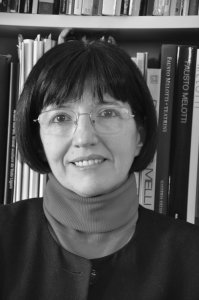
Elena Pontiggia
An art historian, she is professor of Contemporary Art History at the Brera Academy and, on an adjunct basis, at the Faculty of Architecture at the Politecnico di Milano. Her particular field is Italian and international art of the interwar period and the relationship between modernity and classicism. She contributes to the newspaper La Stampa and various magazines, and has curated several exhibitions on 20th-century Italian art, the most recent being ‘Sironi. Sintesi e grandiosità’ at the Museo del Novecento in Milan, with Anna Maria Mondaldo. Her publications include, Modernità e classicità. Il Ritorno all’ordine in Europa (2008, Carducci Prize 2009), Christian Schad (2015), De Chirico. Lettere 1909-1929 (2018) and Storia del Novecento italiano (2021).
Author's books
Arturo Martini
La vita in figure
Elena Pontiggia
pages: 304 pages
A prodigious sculptor skilled in creating images and narrating myths, Arturo Martini (1889-1947) gave himself over entirely to this “mysterious and egoistic” art that saps the energy of those who practise it, as the artist himself wrote. A life without epic moments is completely given over to reinventing the iconography, to the extent that he
Mario Sironi
La grandezza dell'arte, le tragedie della storia
Elena Pontiggia
pages: 304 pages
In Sironi's words, "Art does not need to be nice, it needs to be great", and what better way to describe his own paintings: depictions of city scenes as forbidding yet impressive as modern cathedrals. A Futurist from 1913, in the 1920s Mario Sironi (Sassari 1885 – Milan 1961) began painting the bleaker side of city life and contemporary society,

